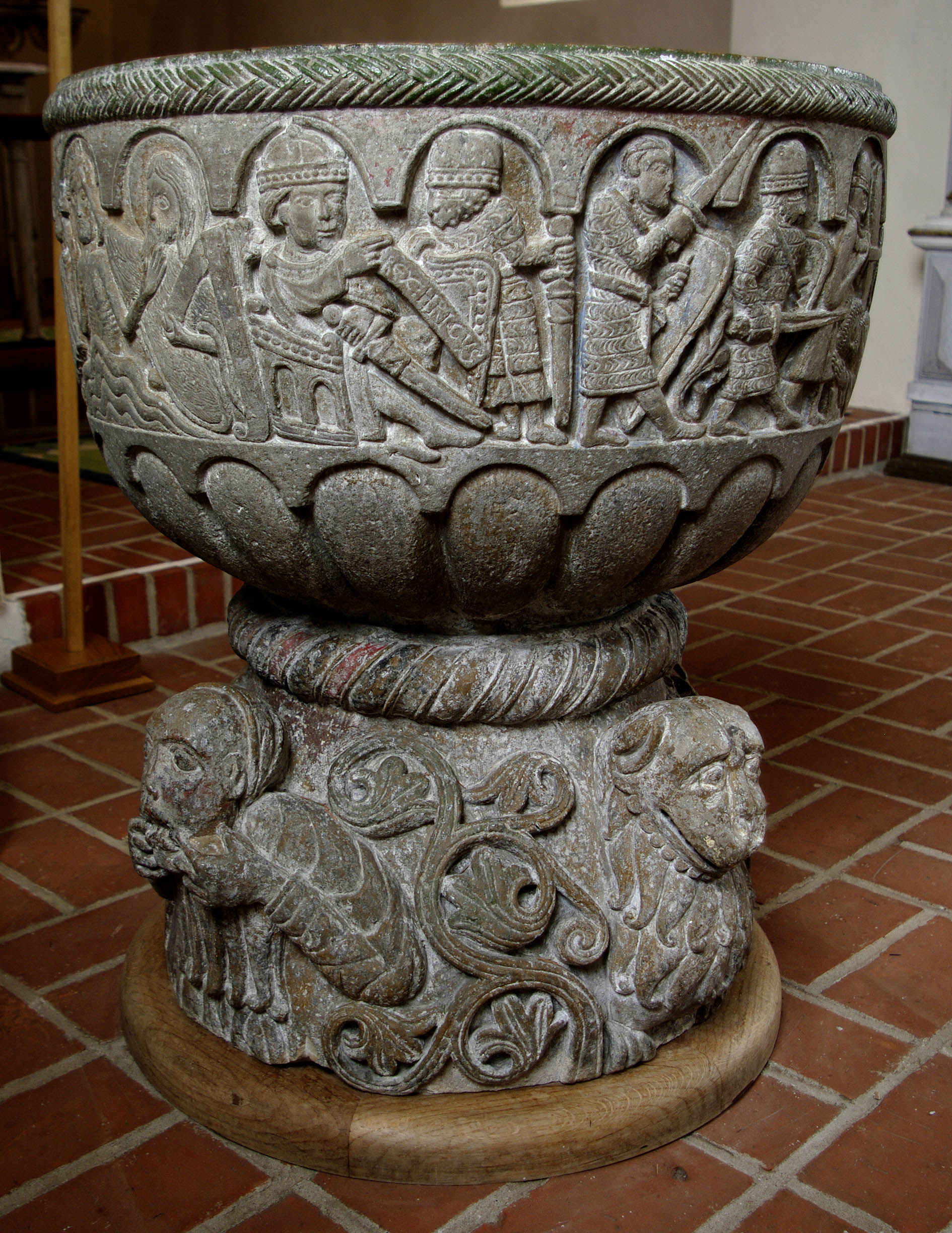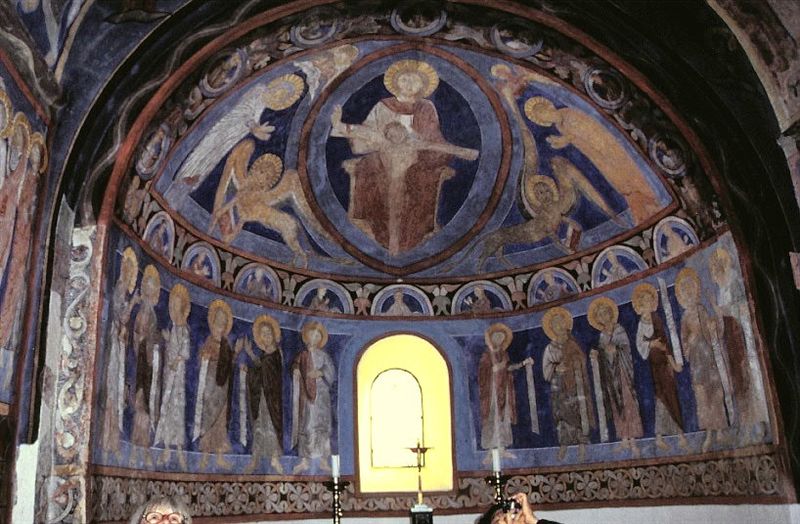|
Tove (sculptor)
Tove was a sculptor and stonemason active in Scania during the Middle Ages. The artist made and signed the baptismal font of Gumlösa Church with the words ''Tove gierhi'' ("Tove made me"). Gumlösa Church was inaugurated in 1191. Tove also made the baptismal font in Lyngsjö Church and perhaps Östra Sönnarslöv and Bjäresjö Church, also in Scania. References {{reflist External links * Frans Carlsson"Lyngsjömästaren : en tysk stenhuggare i Skåne omkring 1200" ''Fornvännen ''Fornvännen'' ("The Friend of the Distant Past"), ''Journal of Swedish Antiquarian Research'' is a Swedish academic journal in the fields of archaeology and Medieval art. It is published quarterly by the Royal Swedish Academy of Letters, Histor ...'', 1970, p. 318-327. Romanesque artists People from Scania 12th-century sculptors 12th-century Danish people fr:Tove (sculpteur) sv:Tove stenmästare ... [...More Info...] [...Related Items...] OR: [Wikipedia] [Google] [Baidu] |
Stonemasonry
Stonemasonry or stonecraft is the creation of buildings, structures, and sculpture using stone as the primary material. It is one of the oldest activities and professions in human history. Many of the long-lasting, ancient shelters, temples, monuments, artifacts, fortifications, roads, bridges, and entire cities were built of stone. Famous works of stonemasonry include the Egyptian pyramids, the Taj Mahal, Cusco's Incan Wall, Easter Island's statues, Angkor Wat, Borobudur, Tihuanaco, Tenochtitlan, Persepolis, the Parthenon, Stonehenge, the Great Wall of China, and Chartres Cathedral. Definition Masonry is the craft of shaping rough pieces of rock into accurate geometrical shapes, at times simple, but some of considerable complexity, and then arranging the resulting stones, often together with mortar, to form structures. *Quarrymen split sheets of rock, and extract the resulting blocks of stone from the ground. *Sawyers cut these rough blocks into cuboids, to required siz ... [...More Info...] [...Related Items...] OR: [Wikipedia] [Google] [Baidu] |
Scania
Scania, also known by its native name of Skåne (, ), is the southernmost of the historical provinces of Sweden, provinces (''landskap'') of Sweden. Located in the south tip of the geographical region of Götaland, the province is roughly conterminous with Skåne County, created in 1997. Like the other former provinces of Sweden, Scania still features in colloquial speech and in cultural references, and can therefore not be regarded as an archaic concept. Within Scania there are 33 municipalities of Sweden, municipalities that are autonomous within the Skåne Regional Council. Scania's largest urban areas of Sweden, city, Malmö, is the third-largest city in Sweden, as well as the fifth-largest in Scandinavia. To the north, Scania borders the former provinces of Halland and Småland, to the northeast Blekinge, to the east and south the Baltic Sea, and to the west Öresund. Since 2000, a road and railway bridge, the Öresund Bridge, bridges the Öresund, Sound and connects Scania ... [...More Info...] [...Related Items...] OR: [Wikipedia] [Google] [Baidu] |
Middle Ages
In the history of Europe, the Middle Ages or medieval period lasted approximately from the late 5th to the late 15th centuries, similar to the post-classical period of global history. It began with the fall of the Western Roman Empire and transitioned into the Renaissance and the Age of Discovery. The Middle Ages is the middle period of the three traditional divisions of Western history: classical antiquity, the medieval period, and the modern period. The medieval period is itself subdivided into the Early, High, and Late Middle Ages. Population decline, counterurbanisation, the collapse of centralized authority, invasions, and mass migrations of tribes, which had begun in late antiquity, continued into the Early Middle Ages. The large-scale movements of the Migration Period, including various Germanic peoples, formed new kingdoms in what remained of the Western Roman Empire. In the 7th century, North Africa and the Middle East—most recently part of the Eastern Ro ... [...More Info...] [...Related Items...] OR: [Wikipedia] [Google] [Baidu] |
Baptismal Font
A baptismal font is an article of church furniture used for baptism. Aspersion and affusion fonts The fonts of many Christian denominations are for baptisms using a non-immersive method, such as aspersion (sprinkling) or affusion (pouring). The simplest of these fonts has a pedestal (about tall) with a holder for a basin of water. The materials vary greatly consisting of carved and sculpted marble, wood, or metal. The shape can vary. Many are eight-sided as a reminder of the new creation and as a connection to the practice of circumcision, which traditionally occurs on the eighth day. Some are three-sided as a reminder of the Holy Trinity: Father, Son, and Holy Spirit. Fonts are often placed at or near the entrance to a church's nave to remind believers of their baptism as they enter the church to pray, since the rite of baptism served as their initiation into the Church. In many churches of the Middle Ages and Renaissance there was a special chapel or even a separate build ... [...More Info...] [...Related Items...] OR: [Wikipedia] [Google] [Baidu] |
Lyngsjö Church
Lyngsjö Church ( sv, Lyngsjö kyrka) is a medieval church in , in the province of Skåne, Sweden. The well-preserved medieval church contains an unusual, Romanesque antependium of gilt copper of unknown origin. History and architecture Lyngsjö Church was probably built during the 1140s in Romanesque style. The building material is fieldstone. From the beginning the church had a broad, western tower, a nave, choir and an apse. Originally the church ceiling was barrel vaulted but it was replaced by the presently visible Gothic vaults in the 15th century. The apse was demolished in 1796, and the entrances to the church altered. Unusually, Lyngsjö Church contains a small walled-up entrance, measuring , in the northern wall. It was used by criminals who had been sentenced to death; Lynsjö was between 1649 and 1750 centre of the hundred , and therefore both the location of the courthouse and the gallows serving the hundred. Convicted criminals were given the last rites in the church b ... [...More Info...] [...Related Items...] OR: [Wikipedia] [Google] [Baidu] |
Östra Sönnarslöv Church
Östra Sönnarslöv Church ( sv, Östra Sönnarslövs kyrka) is a church in Östra Sönnarslöv, a village in Kristianstad Municipality, Scania, Sweden. History The church originally consisted of a nave, a chancel and an apse, and was built during the 12th century. The broad tower was added in the 13th century. The church contains the graves of the Ramel family, lords of nearby Maltesholm Castle. During the 18th century a north transept arm was added, and during substantial reconstruction works in the 1860s another transept arm was added to the south. The apse was demolished at the same time, and the nave heavily rebuilt; today only the tower and the chancel are preserved from the medieval church. A renovation was carried out in the 1960s, and at this time the medieval murals in the chancel were restored. Murals and furnishings The murals in the chancel are from the middle of the 15th century and unusually well-preserved with vivid colours and sharp contours. They depict the fo ... [...More Info...] [...Related Items...] OR: [Wikipedia] [Google] [Baidu] |
Bjäresjö Church
Bjäresjö Church ( sv, Bjäresjö kyrka) is a medieval church in , in the province of Skåne, Sweden. The church contains several medieval mural paintings as well as a richly decorated Romanesque baptismal font. History and architecture There was probably a wooden church in the same spot as the current church as early as the 11th century. It was replaced by the present stone church around 1150. The church was built using unusually expensive materials (such as delicately cut sandstone instead of fieldstone) and is unusually richly decorated. The apse in particular displays Romanesque sculptures unusual for a countryside church. It has been assumed that the building of the church was financed by a local lord, indicating that this area of the province was important also politically during the early Middle Ages. A broad, western tower was built during the 12th century but demolished and replaced with the currently visible Neo-Romanesque tower in 1892. Inside the church the vaults w ... [...More Info...] [...Related Items...] OR: [Wikipedia] [Google] [Baidu] |
Swedish History Museum
The Swedish History Museum ( sv, Historiska museet or Statens historiska museum) is a museum located in Stockholm, Sweden, that covers Swedish archaeology and cultural history from the Mesolithic period to present day. Founded in 1866, it operates as a government agency and is tasked with preserving Swedish historical items as well as making knowledge about history available to the public. The origin of the museum is the collections of art and historical objects gathered by Swedish monarchs since the 16th century. It has a number of permanent exhibitions and annually hosts special exhibitions tied to current events. Function The History Museum is part of a central museum agency called the ''Statens historiska museer'' (SHM) ("National Historical Museums"). Other museums under the aegis of this agency are The Royal Armouries, The Economy Museum, Skokloster Castle, The Hallwyl Museum the Tumba Papermill Museum. History The foundation for what was to become the Swedish Hi ... [...More Info...] [...Related Items...] OR: [Wikipedia] [Google] [Baidu] |
Fornvännen
''Fornvännen'' ("The Friend of the Distant Past"), ''Journal of Swedish Antiquarian Research'' is a Swedish academic journal in the fields of archaeology and Medieval art. It is published quarterly by the Royal Swedish Academy of Letters, History and Antiquities in Stockholm, Sweden. The journal's contributions are written in the Scandinavian languages, English, or German with summaries in English. The editor-in-chief is Mats Roslund. The Editorial Board practices double blind peer review with external reviewers. ''Fornvännen'' began publication in 1906 when it replaced two earlier journals, ''Svenska Fornminnesföreningens Tidskrift'' and ''Vitterhetsakademiens Månadsblad''. Early contributors included noted archaeologists Oscar Montelius and Hans Hildebrand. Stig Welinder has noted that the journal included articles by women from an early stage, including those of Rosa Norström and Sigrid Leijonhufvud, and characterises this as part of the women's rights movement in Sweden. ... [...More Info...] [...Related Items...] OR: [Wikipedia] [Google] [Baidu] |
Romanesque Artists
Romanesque may refer to: In art and architecture * First Romanesque, or Lombard Romanesque architectural style *Pre-Romanesque art and architecture, a term used for the early phase of the style *Romanesque architecture, architecture of Europe which emerged in the late 10th century and lasted to the 13th century ** Romanesque secular and domestic architecture **Brick Romanesque, North Germany and Baltic **Norman architecture, the traditional term for the style in English ** Spanish Romanesque ** Romanesque architecture in France * Romanesque art, the art of Western Europe from approximately AD 1000 to the 13th century or later * Romanesque Revival architecture, an architectural style which started in the mid-19th century, inspired by the original Romanesque architecture ** Richardsonian Romanesque, a style of Romanesque Revival architecture named for an American architect Other uses * ''Romanesque'' (EP), EP by Japanese rock band Buck-Tick * "Romanesque" (song), a 2007 sing ... [...More Info...] [...Related Items...] OR: [Wikipedia] [Google] [Baidu] |





